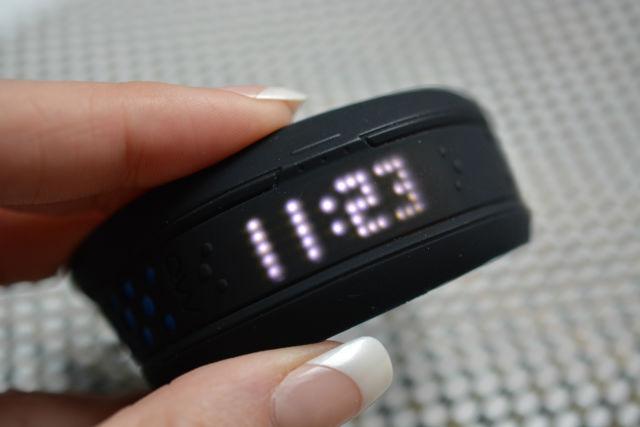reader comments
14
with 11 posters participating
Share this story
Share on Facebook
Share on Twitter
Share on Reddit
Video shot/edited by Jennifer Hahn.
Mio has been in the fitness tracker market for a long time, but it's seldom mentioned in the same breath as Fitbit, Jawbone, and Garmin. Mio was one of the first companies to focus on wrist-bound heart rate monitoring, and its monitors are known for their accuracy. The $129 Fuse is the middle-of-the-road Mio device, competing with some of the newest products from Fitbit and Garmin. It features an optical heart rate monitor and daily activity tracking, but not much else.
Now after a few updates, the Fuse also tracks sleep, and it works with Mio's new PAI app, which uses its heart rate analysis to give you personal activity intelligence points when you keep your pulse elevated. While the Mio Go app gives you a daily picture of your activity, PAI provides a long-term view to encourage you to complete high-intensity activities as often as you can. If you're considered a mid-level Fitbit or Garmin device, the Fuse is another viable option if you're looking for a no-frills, no-nonsense tracker.
Design: Practical, not pretty
Mio products don't look like any other trackers on the market. The Fuse, like the
other three Mio fitness trackers
, has a soft silicone band with a bunch of holes in it that are both decorative and serve as anchors for its wristwatch-style buckle. It's about an inch wide at its thickest, making it too bulky and unfashionable to be an all-day device. At a time when other companies are striving to pack their thin, fashion-forward devices (like the $149 Fitbit Charge HR or the
$149 Garmin Vivosmart HR

) with around-the-clock features like smartphone notifications and caller ID, the Fuse doesn't have any. However, the Fuse is super comfortable and secure to wear during workouts—I've always liked that Mio eschews vanity in favor of devices that are practical when you're sweating on the treadmill or flailing your arms during Zoomba class.
Advertisement
The module at the top is connected to the band, so whatever color you decide to get is the one you're stuck with. The LED display is hidden under the matte black silicone, lighting up only when one of its three pressure points are tapped. You can press and hold the top-center point to activate the heart rate monitor before starting an activity; the two side points are to scroll between screens in All-Day mode and in Workout mode. All-Day mode shows you the time, goal percentage, distance traveled, steps taken, and calories burned.
You get used to the invisible buttons after a while, but at first I just tapped all over the top of my wrist to figure out how to make it work. You have to be conscious
of how long you press each point, especially the top-center, because if you press too long you can inadvertently start recording an activity when you're just chilling on the couch. Another weird control: pressing and holding both side points at once activates sleep mode, which tracks how much you move throughout the night.While heart rate monitoring is the big feature of the Fuse (more on that in a minute), it can also act as your daily activity tracker. It monitors steps, calories, distance, swimming (resistant to 30 meters), and sleep, and it will record your resting heart rate right before you wake up. The Fuse doesn't get in the way while it records a workout, and you can customize vibration alerts that occur throughout the duration. The screen also turns on every once in a while to display your current heart rate, so you can easily glance down to check it. Unlike more expensive trackers like the Fitbit Surge, the Fuse doesn't have activity profiles to choose from on the band (think "elliptical," "treadmill," cycling," etc), but it does have a small list in the Go app so you can choose the activity that you were doing in each session once your data is synced.
Advertisement
The Mio Fuse's LED display shows information minimalistically, including steps, calories, distance, and heart rate.
The wrist band of soft silicone is stretchy and comfortable.
It's snap, watch-like closure is easy to adjust.
The optical heart rate monitor can measure your pulse at any time.
You cannot interchange the bands, so choose your color wisely.
The Fuse is more of a workout-only device, but it can be used 24/7 to track daily activity and sleep.
Features: The one and only heart rate
The Fuse doesn't bother with extra frills. It tracks activity and heart rate. That's it. As I said before, Mio is known for its consistently accurate optical heart rate monitors, and the Fuse is no different. You can tap and hold the top-center point to get a heart rate measurement, typically within a few seconds. In my time using the Fuse, its readings were always close to my own pulse measurements. It's difficult for most fitness trackers to maintain consistent accuracy as your heart rate increases—we're talking above 120 bpm—but the Fuse handled high heart rates very well.
I also like that you can choose from 1-Zone or 5-Zone heart rate settings. This is just how the Fuse and the Mio Go app break down your heart rate zones: 1-Zone has three levels (below target, target zone, and above target) while 5-Zone has five levels (rest, very light, light, moderate, hard, and maximum). 1-Zone is perfect for anyone trying to reach a certain heart rate, and 5-Zone is good for people like me who just want to see how far they can push themselves to get their heart rate as high as possible.




